
https://ebookmass.com/product/ebook-online-access-for-

Instant digital products (PDF, ePub, MOBI) ready for you
Download now and discover formats that fit your needs...
ISE EBook Online Access for Anatomy, Physiology, and Disease: Foundations for the Health Professions, 3e 3rd Edition Roiger
https://ebookmass.com/product/ise-ebook-online-access-for-anatomyphysiology-and-disease-foundations-for-the-health-professions-3e-3rdedition-roiger/
ebookmass.com
Laboratory Manual for Anatomy & Physiology (Anatomy and Physiology) 5th Edition, (Ebook PDF)
https://ebookmass.com/product/laboratory-manual-for-anatomyphysiology-anatomy-and-physiology-5th-edition-ebook-pdf/
ebookmass.com
eBook Online Access for Organic Chemistry 10th Edition, (Ebook PDF)
https://ebookmass.com/product/ebook-online-access-for-organicchemistry-10th-edition-ebook-pdf/
ebookmass.com
A Guide to SQL 10th Edition Mark Shellman
https://ebookmass.com/product/a-guide-to-sql-10th-edition-markshellman/
ebookmass.com

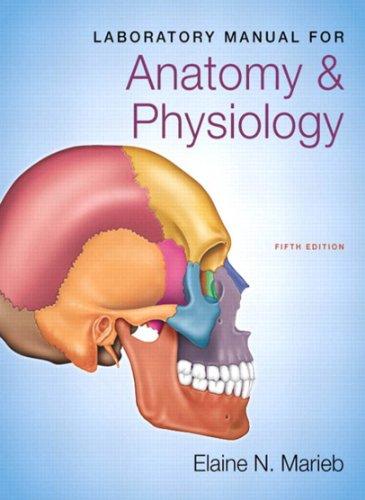

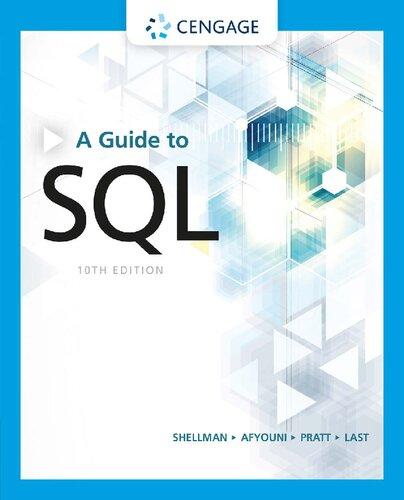
Organizational Ethics: A Practical Approach 4th Edition, (Ebook PDF)
https://ebookmass.com/product/organizational-ethics-a-practicalapproach-4th-edition-ebook-pdf/
ebookmass.com
The Collected Papers of J. L. Moles - Volume 2 John Marincola
https://ebookmass.com/product/the-collected-papers-of-j-l-molesvolume-2-john-marincola/
ebookmass.com
Sustainable Resource Management: Modern Approaches and Contexts 1st Edition Chaudhery Mustansar Hussain
https://ebookmass.com/product/sustainable-resource-management-modernapproaches-and-contexts-1st-edition-chaudhery-mustansar-hussain/
ebookmass.com
Focus: How to Plan Strategy and Improve Execution to Achieve Growth 1st Edition Vikas Mittal
https://ebookmass.com/product/focus-how-to-plan-strategy-and-improveexecution-to-achieve-growth-1st-edition-vikas-mittal/
ebookmass.com
Overpressure Protection in the Process Industry: A Critical View Marc Hellemans
https://ebookmass.com/product/overpressure-protection-in-the-processindustry-a-critical-view-marc-hellemans/
ebookmass.com
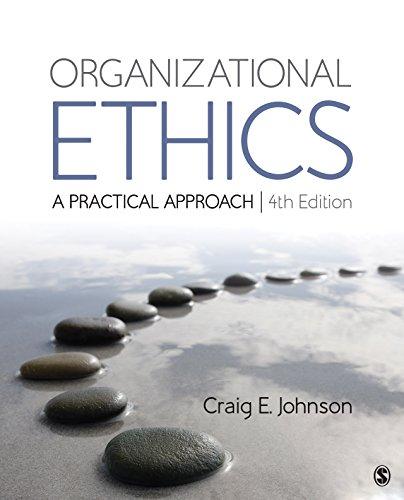




Reading Books and Prints as Cultural Objects 1st Edition
Evanghelia Stead (Eds.)
https://ebookmass.com/product/reading-books-and-prints-as-culturalobjects-1st-edition-evanghelia-stead-eds/
ebookmass.com


2.6 Water Mixtures 47
2.6a Categories of Water Mixtures 47
2.6b Expressions of Solution Concentration 48
2.7 Biological Macromolecules 49
2.7a General Characteristics 49
2.7b Lipids 51
2.7c Carbohydrates 54
2.7d Nucleic Acids 55
2.7e Proteins 57
INTEGRATE: ConCept overview Organic Biomolecules 60
2.8 Protein structure 62
2.8a Categories of Amino Acids 62
2.8b Amino Acid Sequence and Protein Conformation 64

Chapter 3
Energy, Chemical Reactions, and Cellular Respiration 70
3.1 Energy 71
3.1a Classes of Energy 71
3.1b Forms of Energy 71
3.1c Laws of Thermodynamics 73
INTEGRATE: ConCept overview Energy as It Relates to Human Body Function 74
3.2 Chemical Reactions 76
3.2a Chemical Equations 76
3.2b Classification of Chemical Reactions 76
3.2c Reaction Rates and Activation Energy 80
3.3 Enzymes 81
3.3a Function of Enzymes 81
3.3b Enzyme Structure and Location 82
3.3c Mechanism of Enzyme Action 82
3.3d Classification and Naming of Enzymes 82
3.3e Enzymes and Reaction Rates 84
3.3f Controlling Enzymes 85
3.3g Metabolic Pathways and Multienzyme Complexes 85
3.4 Cellular Respiration 87
3.4a Overview of Glucose Oxidation 87
INTEGRATE: ConCept overview How Enzymes Work 88
3.4b Glycolysis 91
3.4c Intermediate Stage 92
3.4d Citric Acid Cycle 92
3.4e The Electron Transport System 95
3.4f ATP Production 97
3.4g The Fate of Pyruvate with Insufficient Oxygen 97
3.4h Other Fuel Molecules That Are Oxidized in Cellular Respiration 98

Chapter 4
Biology of the Cell 102
4.1 Introduction to Cells 103
4.1a How Cells Are Studied 103
4.1b Cell Size and Shape 103
4.1c Common Features and General Functions 104
4.2 Chemical structure of the Plasma Membrane 106
4.2a Lipid Components 106
4.2b Membrane Proteins 108
4.3 Membrane Transport 109
4.3a Passive Processes: Diffusion 109
4.3b Passive Processes: Osmosis 111
4.3c Active Processes 114
INTEGRATE: ConCept overview
Passive and Active Processes of Membrane Transport 120
4.4 Resting Membrane Potential 122
4.4a Introduction 122
4.4b Establishing and Maintaining an RMP 122
4.5 Cell Communication 123
4.5a Direct Contact Between Cells 123
4.5b Ligand-Receptor Signaling 123
4.6 Cellular structures 124
4.6a Membrane-Bound Organelles 124
4.6b Non-Membrane-Bound Organelles 128
4.6c Structures of the Cell’s External Surface 131
INTEGRATE: ConCept overview
Cellular Structures and Their Functions 132
4.6d Membrane Junctions 134
4.7 structure of the Nucleus 135
4.7a Nuclear Envelope and Nucleolus 135
4.7b DNA, Chromatin, and Chromosomes 136
4.8 function of the Nucleus and Ribosomes 136
4.8a Transcription: Synthesizing RNA 136
4.8b Translation: Synthesizing Protein 138
4.8c DNA as the Control Center of a Cell 141
4.9 Cell Division 142
4.9a Cellular Structures 142
4.9b The Cell Cycle 142
4.10 Cell Aging and Death 146

Chapter 5
Tissue Organization 151
5.1 Epithelial Tissue: surfaces, Linings, and secretory functions 152
5.1a Characteristics of Epithelial Tissue 152
5.1b Functions of Epithelial Tissue 153
5.1c Classification of Epithelial Tissue 153
INTEGRATE: ConCept overview
The Relationship Between Epithelial Type and Function 158
5.1d Glands 160
5.2 Connective Tissue: Cells in a supportive Matrix 162
5.2a Characteristics of Connective Tissue 162
5.2b Functions of Connective Tissue 164
5.2c Embryonic Connective Tissue 165
5.2d Classification of Connective Tissue 166
INTEGRATE: ConCept overview
The Relationship Between Connective Tissue Type and Function 172
5.3 Muscle Tissue: Movement 174
5.4 Nervous Tissue: Information Transfer and Integration 175
5.5 Integration of Tissues in Organs and Body Membranes 176
5.5a Organs 176
5.5b Body Membranes 176
5.6 Tissue Development and Aging 177
5.6a Tissue Development 177
5.6b Tissue Modification 178
5.6c Aging of Tissues 181
S u PP or t and Body m o vement
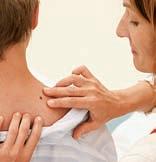
Chapter 6
Integumentary system 185
6.1 Composition and functions of the Integument 186
6.1a Epidermis 186
6.1b Dermis 191
6.1c Subcutaneous Layer 193
6.1d Functions of the Integument 194
INTEGRATE: ConCept overview How Integument Form Influences Its Functions 196
6.2 Integumentary structures Derived from Epidermis 198
6.2a Nails 198
6.2b Hair 199
6.2c Exocrine Glands of the Skin 201
6.3 Repair and Regeneration of the Integumentary system 203
6.4 Development and Aging of the Integumentary system 204
6.4a Integument and Integumentary Derivatives Development 206
6.4b Aging of the Integument 206

Chapter 7
skeletal system: Bone structure and function 211
7.1 Introduction to the skeletal system 212
7.2 Bone: The Major Organ of the skeletal system 212
7.2a General Functions 212
7.2b Classification of Bones 213
7.2c Gross Anatomy of Bones 213
7.2d Bone Marrow 216
7.2e Microscopic Anatomy: Bone Connective Tissue 217
7.2f Microscopic Anatomy: Hyaline Cartilage Connective Tissue 221
7.3 Cartilage Growth 221
7.4 Bone formation 223
7.4a Intramembranous Ossification 223
7.4b Endochondral Ossification 224
INTEGRATE: ConCept overview The Process of Endochondral Ossification 226
7.5 Bone Growth and Bone Remodeling 228
7.5a Bone Growth 228
7.5b Bone Remodeling 229
7.5c Hormones That Influence Bone Growth and Bone Remodeling 230
7.6 Regulating Blood Calcium Levels 231
7.6a Activation of Vitamin D to Calcitriol 231
7.6b Parathyroid Hormone and Calcitriol 232
7.6c Calcitonin 233
7.7 Effects of Aging 233
7.8 Bone fracture and Repair 234
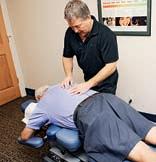
Chapter 8
skeletal system: Axial and Appendicular skeleton 239
8.1 Components of the skeleton 240
8.1a Axial and Appendicular Skeleton 240
8.1b Bone Markings 241
8.2 Bones and features of the skull 242
8.2a General Anatomy of the Skull 242
8.2b Views of the Skull and Landmark Features 243
8.2c Sutures 256
8.2d Orbital and Nasal Complexes, Paranasal Sinuses 258
8.3 Bones Associated with the skull 259
8.4 sex and Age Determination from Analysis of the skull 260
8.4a Sex Differences in the Skull 260
8.4b Aging of the Skull 260
8.5 Bones of the Vertebral Column 262
8.5a Types of Vertebrae 262
8.5b Spinal Curvatures 263
8.5c Vertebral Anatomy 264
8.6 Bones of the Thoracic Cage 269
8.6a Sternum 270
8.6b Ribs 270
8.7 The Upper and Lower Limbs: A Comparison 271
INTEGRATE: ConCept overview
Similarities Between the Upper Limb and Lower Limb Skeletons 272
8.8 The Pectoral Girdle and Its functions 274
8.8a Clavicle 274
8.8b Scapula 274
8.9 Bones of the Upper Limb 275
8.9a Humerus 275
8.9b Radius and Ulna 277
8.9c Carpals, Metacarpals, and Phalanges 278
8.10 The Pelvic Girdle and Its functions 279
8.10a Os Coxae 280
8.10b True and False Pelves 282
8.10c Sex Differences in the Pelvis 282
8.10d Age Differences in the Ossa Coxae 284
8.11 Bones of the Lower Limb 284
8.11a Femur and Patella 284
8.11b Tibia and Fibula 286
8.11c Tarsals, Metatarsals, and Phalanges 288
8.11d Arches of the Foot 289
8.12 Development of the skeleton 291

Chapter 9
skeletal system: Articulations 297
9.1 Classification of Joints 298
INTEGRATE: ConCept overview
The Relationship Between Mobility and Stability in Joints 299
9.2 fibrous Joints 300
9.2a Gomphoses 300
9.2b Sutures 300
9.2c Syndesmoses 301
9.3 Cartilaginous Joints 301
9.3a Synchondroses 301
9.3b Symphyses 302
9.4 synovial Joints 302
9.4a Distinguishing Features and Anatomy of Synovial Joints 302
9.4b Classification of Synovial Joints 304
9.5 synovial Joints and Levers 304
9.5a Terminology of Levers 304
INTEGRATE: ConCept overview
Synovial Joints 305
9.5b Types of Levers 306
9.6 The Movements of synovial Joints 307
9.6a Gliding Motion 307
9.6b Angular Motion 307
9.6c Rotational Motion 309
9.6d Special Movements 310
9.7 features and Anatomy of selected Joints 311
9.7a Temporomandibular Joint 312
9.7b Shoulder Joint 313
9.7c Elbow Joint 317
9.7d Hip Joint 317
9.7e Knee Joint 321
9.7f Talocrural (Ankle) Joint 324
9.8 Development and Aging of the Joints 326

10.1 Introduction to skeletal Muscle 332
10.1a Functions of Skeletal Muscle 332
10.1b Characteristics of Skeletal Muscle Tissue 332
10.2 Anatomy of skeletal Muscle 333
10.2a Gross Anatomy of Skeletal Muscle 333
10.2b Microscopic Anatomy of Skeletal Muscle 334
10.2c Innervation of Skeletal Muscle Fibers 338
10.2d Skeletal Muscle Fibers at Rest 339
10.3 Physiology of skeletal Muscle Contraction 341
10.3a Neuromuscular Junction: Excitation of a Skeletal Muscle Fiber 343
10.3b Sarcolemma, T-tubules, and Sarcoplasmic Reticulum: Excitation-Contraction Coupling 343
10.3c Sarcomere: Crossbridge Cycling 345
10.3d Skeletal Muscle Relaxation 347
INTEGRATE: ConCept overview Skeletal Muscle Contraction 348
10.4 skeletal Muscle Metabolism 350
10.4a Supplying Energy for Skeletal Muscle Contraction 350
10.4b Oxygen Debt 352
10.5 skeletal Muscle fiber Types 353
10.5a Criteria for Classification of Muscle Fiber Types 353
10.5b Classification of Muscle Fiber Types 353
10.5c Distribution of Muscle Fiber Types 354
10.6 Measurement of skeletal Muscle Tension 354
10.6a Muscle Twitch 354
10.6b Changes in Stimulus Intensity: Motor Unit Recruitment 355
10.6c Changes in Stimulus Frequency: Treppe, Wave Summation, Incomplete Tetany, and Tetany 355
10.7 factors Affecting skeletal Muscle Tension Within the Body 357
10.7a Muscle Tone 357
10.7b Isometric Contractions and Isotonic Contractions 357
10.7c Length-Tension Relationship 358
10.7d Muscle Fatigue 358
10.8 Effects of Exercise and Aging on skeletal Muscle 359
10.8a Effects of Exercise 359
10.8b Effects of Aging 359
10.9 Cardiac Muscle Tissue 360
10.10 smooth Muscle Tissue 361
10.10a Location of Smooth Muscle 361
10.10b Microscopic Anatomy of Smooth Muscle 361
10.10c Smooth Muscle Contraction 362
10.10d Controlling Smooth Muscle 364
10.10e Functional Categories 364

Chapter 11
Muscular system: Axial and Appendicular Muscles 370
11.1 skeletal Muscle Composition and Actions 373
11.1a Origin and Insertion 373
11.1b Organizational Patterns of Skeletal Muscle Fibers 373
11.1c Actions of Skeletal Muscles 374
11.2 skeletal Muscle Naming 375
11.3 Muscles of the Head and Neck 376
11.3a Muscles of Facial Expression 376
11.3b Extrinsic Eye Muscles 380
11.3c Muscles of the Oral Cavity and Pharynx 382
11.3d Muscles of the Anterior Neck: The Hyoid Muscles 385
11.3e Muscles That Move the Head and Neck 387
11.4 Muscles of the Vertebral Column 389
11.5 Muscles of Respiration 391
11.6 Muscles of the Abdominal Wall 392
11.7 Muscles of the Pelvic floor 397
11.8 Muscles of the Pectoral Girdle and Upper Limb 399
11.8a Muscles That Move the Pectoral Girdle 399
11.8b Muscles That Move the Glenohumeral Joint/Arm 402
11.8c Arm and Forearm Muscles That Move the Elbow Joint/Forearm 405
INTEGRATE: ConCept overview Muscle Compartmentalization 406
11.8d Forearm Muscles That Move the Wrist Joint, Hand, and Fingers 410
11.8e Intrinsic Muscles of the Hand 416
11.9 Muscles of the Pelvic Girdle and Lower Limb 419
11.9a Muscles That Move the Hip Joint/Thigh 420
11.9b Thigh Muscles That Move the Knee Joint/Leg 424
11.9c Leg Muscles That Move the Ankle, Foot, and Toes 427
11.9d Intrinsic Muscles of the Foot 432
c om munication and c on trol

Chapter 12
Nervous system: Nervous Tissue 437
12.1 Introduction to the Nervous system 438
12.1a General Functions of the Nervous System 438
12.1b Organization of the Nervous System 438
12.2 Nervous Tissue: Neurons 439
12.2a General Characteristics of Neurons 439
12.2b Neuron Structure 440
12.2c Neuron Transport 442
12.2d Classification of Neurons 442
12.2e Relationship of Neurons and Nerves 444
12.3 synapses 445
12.4 Nervous Tissue: Glial Cells 446
12.4a General Characteristics of Glial Cells 446
12.4b Types of Glial Cells 447
12.4c Myelination 448
12.5 Axon Regeneration 451
12.6 Plasma Membrane of Neurons 452
12.6a Types of Pumps and Channels 452
12.6b Distribution of Pumps and Channels 453
12.7 Introduction to Neuron Physiology 455
12.7a Neurons and Ohm’s Law 455
12.7b Neurons at Rest 456
12.8 Physiologic Events in the Neuron segments 459
12.8a Receptive Segment 459
12.8b Initial Segment 462
12.8c Conductive Segment 463
12.8d Transmissive Segment 468
INTEGRATE: ConCept overview Events of Neuron Physiology 470
12.9 Characteristics of Action Potentials 472
12.9a Graded Potentials Versus Action Potentials 472
12.9b Velocity of Action Potential Propagation 473
12.9c Frequency of Action Potentials 473
12.10 Neurotransmitters and Neuromodulation 474
12.10a Classification of Neurotransmitters 474
12.10b Features of Neurotransmitters 475
12.10c Neuromodulation 476
12.11 Neural Integration and Neuronal Pools of the CNs 478

Chapter 13
Nervous system: Brain and Cranial Nerves 483
13.1 Brain Organization and Development 484
13.1a Overview of Brain Anatomy 484
13.1b Development of Brain Divisions 484
13.1c Gray Matter and White Matter Distribution 491
13.2 Protection and support of the Brain 493
13.2a Cranial Meninges 493
13.2b Brain Ventricles 495
13.2c Cerebrospinal Fluid 495
13.2d Blood-Brain Barrier 498
13.3 Cerebrum 499
13.3a Cerebral Hemispheres 499
13.3b Lobes of the Cerebrum 499
INTEGRATE: ConCept overview Anatomic and Functional Areas of the Cerebrum 500
13.3c Functional Areas of the Cerebrum 502
13.3d Central White Matter 505
13.3e Cerebral Lateralization 506
13.3f Cerebral Nuclei 507
13.4 Diencephalon 509
13.4a Epithalamus 509
13.4b Thalamus 510
13.4c Hypothalamus 510
13.5 Brainstem 512
13.5a Midbrain 512
13.5b Pons 514
13.5c Medulla Oblongata 514
13.6 Cerebellum 516
13.6a Structural Components of the Cerebellum 516
13.6b Functions of the Cerebellum 516
13.7 functional Brain systems 518
13.7a Limbic System 518
13.7b Reticular Formation 518
13.8 Integrative functions and Higher-Order Brain functions 519
13.8a Development of Higher-Order Brain Functions 519
13.8b Electroencephalogram 519
13.8c Sleep 520
13.8d Cognition 521
13.8e Memory 521
13.8f Emotion 521
13.8g Language 524
13.9 Cranial Nerves 525

Chapter 14
Nervous system: spinal Cord and spinal Nerves 537
14.1 spinal Cord Gross Anatomy 538
14.2 Protection and support of the spinal Cord 539
14.3 sectional Anatomy of the spinal Cord 541
14.3a Distribution of Gray Matter 541
14.3b Distribution of White Matter 542
14.4 spinal Cord Conduction Pathways 543
14.4a Overview of Conduction Pathways 543
14.4b Sensory Pathways 544
14.4c Motor Pathways 546
INTEGRATE: ConCept overview Differences Between Sensory and Motor Pathways 549
14.5 spinal Nerves 550
14.5a Overview of Spinal Nerves 550
14.5b Nerve Plexuses 552
14.5c Intercostal Nerves 552
14.5d Cervical Plexuses 552
14.5e Brachial Plexuses 554
14.5f Lumbar Plexuses 560
14.5g Sacral Plexuses 562
14.6 Reflexes 566
14.6a Characteristics of Reflexes 566
14.6b Components of a Reflex Arc 566
14.6c Classifying Spinal Reflexes 567
14.6d Spinal Reflexes 568
14.6e Reflex Testing in a Clinical Setting 571
14.7 Development of the spinal Cord 572

Chapter 15
Nervous system: Autonomic Nervous system 576
15.1 Comparison of the somatic and Autonomic Nervous systems 577
15.1a Functional Organization 577
15.1b Lower Motor Neurons of the Somatic Versus Autonomic Nervous System 578
15.1c CNS Control of the Autonomic Nervous System 579
15.2 Divisions of the Autonomic Nervous system 580
15.2a Functional Differences 580
15.2b Anatomic Differences in Lower Motor Neurons 580
15.2c Degree of Response 581
15.3 Parasympathetic Division 582
15.3a Cranial Components 582
15.3b Pelvic Splanchnic Nerves 584
15.4 sympathetic Division 584
15.4a Organization and Anatomy of the Sympathetic Division 584
15.4b Sympathetic Pathways 588
15.5 Comparison of Neurotransmitters and Receptors of the Two Divisions 590
15.5a Overview of ANS Neurotransmitters 590
15.5b Cholinergic Receptors 590
15.5c Adrenergic Receptors 591
15.6 Interactions Between the Parasympathetic and sympathetic Divisions 592
15.6a Autonomic Tone 592
INTEGRATE: ConCept overview
Comparison of the Parasympathetic and Sympathetic Divisions of the ANS 594
15.6b Dual Innervation 596
15.6c Systems Controlled Only by the Sympathetic Division 596
15.7 Integration of Autonomic system function 597
15.7a Autonomic Plexuses 597
15.7b Autonomic Reflexes 598
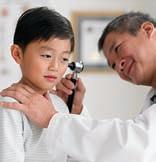
Chapter 16
Nervous system: senses 603
16.1 Introduction to sensory Receptors 604
16.1a General Function of Sensory Receptors 604
16.1b General Structure of Sensory Receptors 604
16.1c Sensory Information Provided by Sensory Receptors 605
16.1d Sensory Receptor Classification 605
16.2 The General senses 607
16.2a Tactile Receptors 607
16.2b Referred Pain 610
16.3 Olfaction and Gustation 611
16.3a Olfaction: The Sense of Smell 611
16.3b Gustation: The Sense of Taste 612
16.4 Physiology of Vision: Refraction and focusing of Light 615
16.4a Accessory Structures of the Eye 615
16.4b Eye Structure 617
16.4c Physiology of Vision: Refraction and the Focusing of Light 623
16.4d Physiology of Vision: Phototransduction 626
16.4e Visual Pathways 630
INTEGRATE: ConCept overview How We See 632
16.5 Hearing and Equilibrium Receptors 634
16.5a Ear Structure 634
16.5b Hearing 637
16.5c Auditory Pathways 642
INTEGRATE: ConCept overview How We Hear 644
16.5d Equilibrium and Head Movement 646

Chapter 17
Endocrine system 654
17.1 Introduction to the Endocrine system 655
17.1a Comparison of the Two Control Systems 655
17.1b General Functions of the Endocrine System 656
17.2 Endocrine Glands 656
17.2a Location of the Major Endocrine Glands 656
17.2b Stimulation of Hormone Synthesis and Release 658
17.3 Hormones 658
17.3a Categories of Circulating Hormones 658
17.3b Local Hormones 659
17.4 Hormone Transport 660
17.4a Transport in the Blood 660
17.4b Levels of Circulating Hormone 660
17.5 Target Cells: Interactions with Hormones 661
17.5a Lipid-Soluble Hormones 661
17.5b Water-Soluble Hormones 662
17.6 Target Cells: Degree of Cellular Response 664
17.6a Number of Receptors 664
17.6b Receptor Interactions 665
INTEGRATE: ConCept overview Endocrine System: Major Control System of the Body 666
17.7 The Hypothalamus and the Pituitary Gland 668
17.7a Anatomic Relationship of the Hypothalamus and the Pituitary Gland 668
17.7b Interactions Between the Hypothalamus and the Posterior Pituitary Gland 669
17.7c Interactions Between the Hypothalamus and the Anterior Pituitary Gland 670
17.8 Representative Hormones Regulated by the Hypothalamus 673
17.8a Growth Hormone 673
17.8b Thyroid Gland and Thyroid Hormone 674
17.8c Adrenal Glands and Cortisol 678
17.9 Pancreatic Hormones 684
17.9a Anatomy of the Pancreas 684
17.9b Effects of Pancreatic Hormones 685
17.10 Other Endocrine Glands 688
17.10a Pineal Gland 688
17.10b Parathyroid Glands 688
17.10c Structures with an Endocrine Function 688
17.11 Aging and the Endocrine system 690
Major Regulatory Hormones of the Human Body 695
m ai ntenance and r e gulation
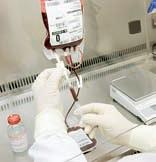
Chapter 18
Cardiovascular system: Blood 701
18.1 functions and General Composition of Blood 702
18.1a Functions of Blood 702
18.1b Physical Characteristics of Blood 702
18.1c Components of Blood 703
18.2 Composition of Blood Plasma 705
18.2a Plasma Proteins 705
18.2b Other Solutes 707
18.3 formed Elements in the Blood 708
18.3a Hemopoiesis 708
18.3b Erythrocytes 711
INTEGRATE: ConCept overview
Recycling and Elimination of Erythrocyte Components 715
18.3c Leukocytes 719
18.3d Platelets 722
18.4 Hemostasis 722
18.4a Vascular Spasm 722
18.4b Platelet Plug Formation 723
18.4c Coagulation Phase 724
18.4d Elimination of the Clot 727
18.5 Development and Aging of Blood 727
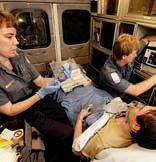
Chapter 19
Cardiovascular system: Heart 731
19.1 Introduction to the Cardiovascular system 732
19.1a General Function 732
19.1b Overview of Components 733
INTEGRATE: ConCept overview
Blood Flow Through the Heart and Circulatory Routes 736
19.2 The Heart Within the Thoracic Cavity 738
19.2a Location and Position of the Heart 738
19.2b Characteristics of the Pericardium 738
19.3 Heart Anatomy 739
19.3a Superficial Features of the Heart 739
19.3b Layers of the Heart Wall 742
19.3c Heart Chambers 743
19.3d Heart Valves 743
19.3e Microscopic Structure of Cardiac Muscle 746
19.3f Fibrous Skeleton of the Heart 747
19.4 Coronary Vessels: Blood supply Within the Heart Wall 748
19.4a Coronary Arteries 748
19.4b Coronary Veins 749
19.5 Anatomic structures Controlling Heart Activity 750
19.5a The Heart’s Conduction System 750
19.5b Innervation of the Heart 750
19.6 stimulation of the Heart 752
19.6a Nodal Cells at Rest 752
19.6b Electrical Events at the SA Node: Initiation of the Action Potential 752
19.6c Conduction System of the Heart: Spread of the Action Potential 753
19.7 Cardiac Muscle Cells 755
19.7a Cardiac Muscle Cells at Rest 755
19.7b Electrical and Mechanical Events of Cardiac Muscle Cells 756
19.7c Repolarization and the Refractory Period 756
19.7d The ECG Recording 758
19.8 The Cardiac Cycle 760
19.8a Overview of the Cardiac Cycle 760
19.8b Events of the Cardiac Cycle 762
INTEGRATE: ConCept overview Changes Associated with a Cardiac Cycle 764
19.9 Cardiac Output 765
19.9a Introduction to Cardiac Output 765
19.9b Variables That Influence Heart Rate 766
19.9c Variables That Influence Stroke Volume 767
19.9d Variables That Influence Cardiac Output 768
19.10 Development of the Heart 770
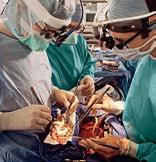
Chapter 20
Cardiovascular system: Vessels and Circulation 776
20.1 structure and function of Blood Vessels 777
20.1a General Structure of Vessels 777
20.1b Arteries 779
20.1c Capillaries 782
20.1d Veins 785
20.1e Pathways of Blood Vessels 785
INTEGRATE: ConCept overview How Blood Vessel Form Influences Function 786
20.2 Total Cross-sectional Area and Blood flow Velocity 787
20.3 Capillary Exchange 788
20.3a Diffusion and Vesicular Transport 788
20.3b Bulk Flow 788
20.3c Net Filtration Pressure 789
20.3d Role of the Lymphatic System 790
20.4 Local Blood flow 790
20.4a Degree of Vascularization and Angiogenesis 790
20.4b Myogenic Response 791
20.4c Local, Short-Term Regulation 791
20.4d Relationship of Local and Total Blood Flow 792
20.5 Blood Pressure, Resistance, and Total Blood flow 793
20.5a Blood Pressure 793
20.5b Resistance 798
20.5c Relationship of Blood Flow to Blood Pressure Gradients and Resistance 799
20.6 Regulation of Blood Pressure and Blood flow 800
20.6a Neural Regulation of Blood Pressure 800
20.6b Hormonal Regulation of Blood Pressure 802
INTEGRATE: ConCept overview Factors That Regulate Blood Pressure 804
20.7 Blood flow Distribution During Exercise 806
20.8 Pulmonary Circulation 806
20.8a Blood Flow Through the Pulmonary Circulation 806
20.8b Characteristics of the Pulmonary Circulation 807
20.9 systemic Circulation: Vessels from and to the Heart 808
20.9a General Arterial Flow Out of the Heart 808
20.9b General Venous Return to the Heart 810
20.10 systemic Circulation: Head and Trunk 810
20.10a Head and Neck 810
20.10b Thoracic and Abdominal Walls 814
20.10c Thoracic Organs 816
20.10d The Gastrointestinal Tract 817
20.10e Posterior Abdominal Organs, Pelvis, and Perineum 820
20.11 systemic Circulation: Upper and Lower Limbs 822
20.11a Upper Limb 822
20.11b Lower Limb 824
20.12 Comparison of fetal and Postnatal Circulation 827
20.12a Fetal Circulation 827
20.12b Postnatal Changes 828

Chapter 21
Lymphatic system 833
21.1 Lymph and Lymph Vessels 835
21.1a Lymph and Lymphatic Capillaries 835
21.1b Lymphatic Vessels, Trunks, and Ducts 836
21.2 Overview of Lymphatic Tissue and Organs 838
21.3 Primary Lymphatic structures 839
21.3a Red Bone Marrow 839
21.3b Thymus 840
21.4 secondary Lymphatic structures 841
21.4a Lymph Nodes 841
21.4b Spleen 842
21.4c Tonsils 844
21.4d Lymphatic Nodules and MALT 844
INTEGRATE: ConCept overview
Relationship of the Lymphatic System to Both the Cardiovascular System and Immune System 845
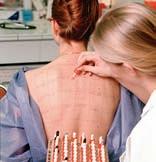
Chapter 22
Immune system and the Body’s Defense 849
22.1 Overview of Diseases Caused by Infectious Agents 850
22.2 Overview of the Immune system 851
22.2a Immune Cells and Their Locations 851
22.2b Cytokines 852
22.2c Comparison of Innate Immunity and Adaptive Immunity 853
22.3 Innate Immunity 854
22.3a Preventing Entry 854
22.3b Cellular Defenses 856
22.3c Antimicrobial Proteins 857
22.3d Inflammation 858
22.3e Fever 861
INTEGRATE: ConCept overview
Innate Immunity 862
22.4 Adaptive Immunity: An Introduction 864
22.4a Antigens 864
22.4b General Structure of Lymphocytes 865
22.4c Antigen-Presenting Cells and MHC Molecules 866
22.4d Overview of Life Events of Lymphocytes 870
22.5 formation and selection of Lymphocytes 871
22.5a Formation of T-Lymphocytes 871
22.5b Selection of T-Lymphocytes 872
22.5c Differentiation and Migration of T-Lymphocytes 873
22.6 Activation and Clonal selection of Lymphocytes 874
22.6a Activation of T-Lymphocytes 874
22.6b Activation of B-Lymphocytes 875
22.6c Lymphocyte Recirculation 876
22.7 Effector Response at Infection site 876
22.7a Effector Response of T-Lymphocytes 876
22.7b Effector Response of B-lymphocytes 877
22.8 Immunoglobulins 877
22.8a Structure of Immunoglobulins 877
22.8b Actions of Antibodies 878
22.8c Classes of Immunoglobulins 879
INTEGRATE: ConCept overview
Adaptive Immunity 880
22.9 Immunologic Memory and Immunity 882
22.9a Immunologic Memory 882
22.9b Measure of Immunologic Memory 882
22.9c Active and Passive Immunity 883
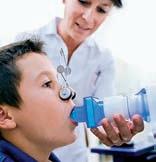
Chapter 23 Respiratory system 890
23.1 Introduction to the Respiratory system 891
23.1a General Functions of the Respiratory System 891
23.1b General Organization of the Respiratory System 891
23.1c Respiratory Mucosa 891
23.2 Upper Respiratory Tract 893
23.2a Nose and Nasal Cavity 893
23.2b Paranasal Sinuses 894
23.2c Pharynx 896
23.3 Lower Respiratory Tract 897
23.3a Larynx 897
23.3b Trachea 899
23.3c Bronchial Tree 900
23.3d Respiratory Zone: Respiratory Bronchioles, Alveolar Ducts, and Alveoli 904
23.3e Respiratory Membrane 906
23.4 Lungs 907
23.4a Gross Anatomy of the Lung 907
23.4b Circulation to and Innervation of the Lungs 910
23.4c Pleural Membranes and Pleural Cavity 911
23.4d How Lungs Remain Inflated 912
23.5 Respiration: Pulmonary Ventilation 912
23.5a Introduction to Pulmonary Ventilation 913
23.5b Mechanics of Breathing 913
23.5c Nervous Control of Breathing 918
23.5d Airflow, Pressure Gradients, and Resistance 922
23.5e Pulmonary and Alveolar Ventilation 923
23.5f Volume and Capacity 923
23.6 Respiration: Alveolar and systemic Gas Exchange 925
23.6a Chemical Principles of Gas Exchange 925
23.6b Alveolar Gas Exchange (External Respiration) 927
23.6c Systemic Gas Exchange (Internal Respiration) 928
23.7 Respiration: Gas Transport 930
23.7a Oxygen Transport 930
23.7b Carbon Dioxide Transport 930
23.7c Hemoglobin as a Transport Molecule 930
INTEGRATE: ConCept overview The Movement of Oxygen and Carbon Dioxide 934
23.8 Breathing Rate and Homeostasis 936
23.8a Effects of Hyperventilation and Hypoventilation on Cardiovascular Function 936
23.8b Breathing and Exercise 937

Chapter 24
Urinary system 942
24.1 Introduction to the Urinary system 943
24.2 Gross Anatomy of the Kidney 945
24.2a Location and Support 945
24.2b Sectional Anatomy of the Kidney 946
24.2c Innervation of the Kidney 947
24.3 functional Anatomy of the Kidney 947
24.3a Nephron 947
24.3b Collecting Tubules and Collecting Ducts 951
24.3c Juxtaglomerular Apparatus 952
24.4 Blood flow and filtered fluid flow 952
24.4a Blood Flow Through the Kidney 952
24.4b Filtrate, Tubular Fluid, and Urine Flow 954
24.5 Production of filtrate Within the Renal Corpuscle 955
24.5a Overview of Urine Formation 955
24.5b Filtration Membrane 956
24.5c Formation of Filtrate and Its Composition 957
24.5d Pressures Associated with Glomerular Filtration 957
24.5e Regulation of Glomerular Filtration Rate 959
INTEGRATE: ConCept overview
Glomerular Filtration and Its Regulation 962
24.6 Reabsorption and secretion in Tubules and Collecting Ducts 963
24.6a Overview of Transport Processes 963
24.6b Transport Maximum and Renal Threshold 964
24.6c Substances Reabsorbed Completely 964
24.6d Substances with Regulated Reabsorption 965
24.6e Substances Eliminated as Waste Products 970
24.6f Establishing the Concentration Gradient 972
INTEGRATE: ConCept overview
Tubular Reabsorption and Tubular Secretion 974
24.7 Evaluating Kidney function 975
24.7a Measuring Glomerular Filtration Rate 975
24.7b Measuring Renal Plasma Clearance 975
24.8 Urine Characteristics, Transport, storage, and Elimination 976
24.8a Characteristics of Urine 976
24.8b Urinary Tract (Ureters, Urinary Bladder, Urethra) 978
24.8c Micturition 982
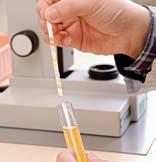
Chapter 25 fluid and Electrolytes 988
25.1 Body fluids 989
25.1a Percentage of Body Fluid 989
25.1b Fluid Compartments 989
25.2 fluid Balance 992
25.2a Fluid Intake and Fluid Output 992
25.2b Fluid Imbalance 993
25.2c Regulation of Fluid Balance 994
25.3 Electrolyte Balance 996
25.3a Nonelectrolytes and Electrolytes 996
25.3b Major Electrolytes: Location, Functions, and Regulation 996
25.4 Hormonal Regulation 1000
25.4a Angiotensin II 1000
25.4b Antidiuretic Hormone 1001
25.4c Aldosterone 1003
25.4d Atrial Natriuretic Peptide 1004
25.5 Acid-Base Balance 1006
25.5a Categories of Acid 1006
25.5b The Kidneys and Regulation of Fixed Acids 1006
25.5c Respiration and Regulation of Volatile Acid 1008
25.5d Chemical Buffers 1008
INTEGRATE: ConCept overview Maintaining Acid-Base Balance 1011
25.6 Disturbances to Acid-Base Balance 1012
25.6a Overview of Acid-Base Imbalances 1012
25.6b Respiratory-Induced Acid-Base Disturbances 1012
25.6c Metabolic-Induced Acid-Base Disturbances 1012
25.6d Compensation 1013

Chapter 26
Digestive system 1020
26.1 Introduction to the Digestive system 1021
26.1a General Functions of the Digestive System 1021
26.1b Organization of the Digestive System 1021
26.1c Gastrointestinal Tract Wall 1021
26.1d Serous Membranes of the Abdominal Cavity 1024
26.1e Regulation of Digestive System Processes 1025
26.2 Upper Gastrointestinal Tract 1026
26.2a Overview of the Upper Gastrointestinal Tract Organs 1026
26.2b Oral Cavity and Salivary Glands 1026
26.2c Pharynx and Esophagus 1030
26.2d Stomach 1033
26.3 Lower Gastrointestinal Tract 1040
26.3a Overview of the Lower Gastrointestinal Tract Organs 1040
26.3b Small Intestine 1041
26.3c Accessory Organs and Ducts 1043
26.3d Large Intestine 1050
26.4 Nutrients and Their Digestion 1055
26.4a Carbohydrate Digestion 1055
26.4b Protein Digestion 1056
26.4c Lipid Digestion 1059
26.4d Nucleic Acid Digestion 1061
INTEGRATE: ConCept overview Structures and Functions of the Digestive System 1062

Chapter 27
Nutrition and Metabolism 1068
27.1 Introduction to Nutrition 1069
27.2 Macronutrients 1069
27.2a Carbohydrates 1069
27.2b Lipids 1070
27.2c Proteins 1071
27.3 Micronutrients 1071
27.3a Vitamins 1071
27.3b Minerals 1073
27.4 Guidelines for Adequate Nutrition 1074
27.5 Regulating Blood Levels of Nutrients 1075
27.5a Absorptive State 1075
27.5b Postabsorptive State 1077
27.6 functions of the Liver 1078
27.6a Anatomy of Liver Lobules 1078
27.6b Cholesterol Synthesis 1078
27.6c Transport of Lipids 1080
27.6d Integration of Liver Structure and Function 1081
INTEGRATE: ConCept overview
Liver Structure and Function 1082
27.7 The Central Role of Cellular Respiration 1084
27.7a ATP Generation 1084
27.7b Interconversion of Nutrient Biomolecules and Their Building Blocks 1086
27.8 Energy and Heat 1086
27.8a Metabolic Rate 1086
27.8b Temperature Regulation 1086
r e P r oduction

Chapter 28
Reproductive system 1092
28.1 Overview of female and Male Reproductive systems 1093
28.1a Common Elements of the Two Systems 1093
28.1b Sexual Maturation in Females and Males 1093
28.1c Anatomy of the Perineum 1093
28.2 Gametogenesis 1094
28.2a A Brief Review of Heredity 1094
28.2b An Overview of Meiosis 1095
28.2c Meiosis I: Reduction Division 1096
28.2d Meiosis II: Separation of Sister Chromatids 1098
28.3 female Reproductive system 1099
28.3a Ovaries 1100
28.3b Oogenesis and the Ovarian Cycle 1103
28.3c Uterine Tubes, Uterus, and Vagina 1107
28.3d Uterine (Menstrual) Cycle and Menstruation 1111
IINTEGRATE: ConCept overview
The Interrelationships Between Hormones, the Ovarian Cycle, and the Uterine (Menstrual) Cycle 1112
28.3e External Genitalia 1114
28.3f Mammary Glands 1114
28.3g Female Sexual Response 1117
28.4 Male Reproductive system 1118
28.4a Scrotum 1118
28.4b Testes and Spermatogenesis 1120
28.4c Duct System in the Male Reproductive Tract 1124
28.4d Accessory Glands and Semen Production 1126
28.4e Penis 1127
28.4f Male Sexual Response 1128
28.5 Development and Aging of the female and Male Reproductive systems 1128
28.5a Genetic Versus Phenotypic Sex 1128
28.5b Formation of Indifferent Gonads and Genital Ducts 1129
28.5c Internal Genitalia Development 1130
28.5d External Genitalia Development 1130
28.5e Puberty 1132
28.5f Menopause and Male Climacteric 1132

Chapter 29
Development, Pregnancy, and Heredity 1137
29.1 Overview of the Prenatal Period 1138
29.2 Pre-Embryonic Period 1139
29.2a Fertilization 1140
29.2b Cleavage 1141
29.2c Implantation 1143
29.2d Formation of the Bilaminar Germinal Disc and Extraembryonic Membranes 1144
29.2e Development of the Placenta 1145
29.3 Embryonic Period 1146
29.3a Gastrulation and Formation of the Primary Germ Layers 1147
29.3b Folding of the Embryonic Disc 1148
29.3c Organogenesis 1151
29.4 fetal Period 1151
29.5 Effects of Pregnancy on the Mother 1154
29.5a The Course of Pregnancy 1154
29.5b Hormonal Changes 1154
29.5c Uterine and Mammary Gland Changes 1155
29.5d Digestive System, Nutrient, and Metabolic Changes 1156
29.5e Cardiovascular and Respiratory System Changes 1157
29.5f Urinary System Changes 1157
29.6 Labor (Parturition) and Delivery 1158
29.6a Factors That Lead to Labor 1158
26.6b False Labor 1158
29.6c Initiation of True Labor 1159
29.6d Stages of True Labor 1160
29.7 Postnatal Changes for the Newborn 1162
29.8 Changes in the Mother After Delivery 1162
29.8a Hormonal Changes 1162
29.8b Blood Volume and Fluid Changes 1163
29.8c Lactation 1163
29.8d Uterine Changes 1165
INTEGRATE: ConCept overview Anatomic and Physiologic Changes That Occur in the Mother 1166
29.9 Heredity 1168
29.9a Overview of Human Genetics 1168
29.9b Patterns of Inheritance 1169
29.9c Sex-Linked Inheritance 1170
29.9d Penetrance and Environmental Influences on Heredity 1171
Appendix A-1
Glossary G-1
Credits C-1
Index I-1

























































































